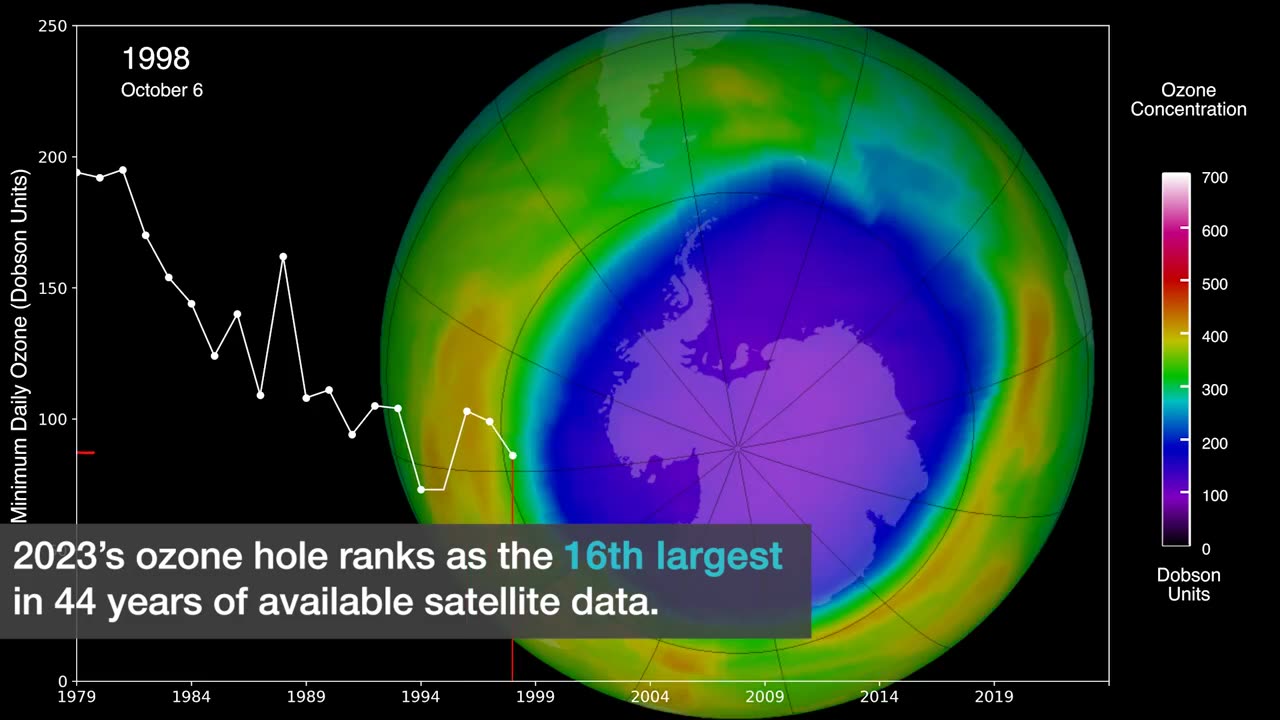Premium Only Content

2023 Ozone Hole Update
The 2023 Antarctic ozone hole reached its maximum size of 10 million square miles (26 million square kilometers) on September 21. This makes it the 16th largest ozone hole since 1979.
During the peak of the ozone depletion season, from September 7 to October 13, the hole averaged 8.9 million square miles (23.1 million square kilometers). This is approximately the size of North America.
This means that the ozone hole was larger than average during the 2023 ozone depletion season. However, it was not the largest ozone hole on record. The largest ozone hole occurred in 2000, when it reached a size of 11 million square miles (28.4 million square kilometers).
Despite the global ban on ozone-depleting chemicals, the ozone hole persists due to the long atmospheric lifetimes of these chemicals. It is expected that the ozone hole will continue to shrink and eventually close in the coming decades, but it is important to continue monitoring and researching the ozone layer to ensure that this happens.
-
 LIVE
LIVE
Badlands Media
8 hours agoBadlands Daily: November 5, 2025
3,968 watching -
 LIVE
LIVE
Wendy Bell Radio
6 hours agoLike Sheep To Slaughter
7,869 watching -

DML
2 hours agoDML LIVE: NYC Goes Socialist: Mamdani’s Victory
18.9K7 -
 1:04:43
1:04:43
Chad Prather
14 hours agoTruth on Trial: When Fear Meets Faith
58.8K32 -
 LIVE
LIVE
LFA TV
13 hours agoLIVE & BREAKING NEWS! | WEDNESDAY 11/5/25
3,314 watching -
 1:57:16
1:57:16
The Chris Salcedo Show
13 hours ago $0.15 earnedDems Win In Dem States...And They Celebrate?
26.5K10 -
 1:04:43
1:04:43
Crypto Power Hour
11 hours ago $0.03 earnedPsychology Of Crypto Market Cycles
40.2K6 -
 9:58
9:58
Clintonjaws
12 days ago $0.24 earnedKaroline Leavitt's Response To 'The View' Host's Nasty Attacks Is Perfect
42.6K25 -
 24:23
24:23
World2Briggs
21 hours ago $0.03 earnedTop 10 Towns You Can Retire on $1900 a month in the Pacific North West.
33.2K9 -
 21:23
21:23
Lady Decade
18 hours ago $0.05 earnedThe Lost Sega Neptune Console Refuses To Die !
36.5K6